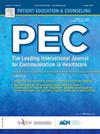当医疗保健生态系统与人工智能集成时,信任。
IF 3.1
2区 医学
Q2 PUBLIC, ENVIRONMENTAL & OCCUPATIONAL HEALTH
引用次数: 0
摘要
信任在医患关系中起着核心作用。然而,随着人工智能(AI)医疗工具在医学中的出现,医患关系变得更加复杂。考虑到医疗保健生态系统中涉及的多个合作伙伴,采用理论框架来分析信任是必不可少的。有几个模型试图将医疗保健中的人际信任解释为预测信任行为参与的一个因素。然而,这些模型只关注信任关系中的一个合作伙伴(患者、医生或人工智能开发人员),并且只考虑该合作伙伴对人工智能医疗工具或对合作伙伴表达的信任。为了解决这一差距,我们提出了患者-人工智能医疗工具-医生人际信任(pai - it)模型,该模型将信任行为概念化为动态信任关系的结果:a)患者和医生之间,b)患者和医生之间对人工智能医疗工具的信任,c)由人工智能医疗工具介导的患者和医生之间。此外,由于这些关系动态在特定的文化、社会和制度背景下展开,因此也必须考虑制度信任。本文章由计算机程序翻译,如有差异,请以英文原文为准。
Trust when the healthcare ecosystem is integrated with Artificial Intelligence
Trust assumes a central role in the patient-physician relationship. However, with the advent of Artificial Intelligence (AI) medical tools in medicine the patient-physician relationship has become more complex. Given the multiple partners involved in the healthcare ecosystem, adopting a theoretical framework for analyzing trust is essential. Several models have tried to explain interpersonal trust in healthcare as a factor that predicts engagement in trusted behavior. However, these models focused on only one partner (patient, physician, or AI developer) in a trust relationship and considered only the trust expressed by that partner in the AI medical tool or in the counter-partner. To address this gap, we propose the Patient–AI medical tools–Physician Interpersonal Trust (PAIP-IT) model, which conceptualizes trusted behavior as the outcome of dynamic trust relationships: a) between the patient and the physician, b) between both the patient and the physician toward AI medical tools, c) between the patient and the physician mediated by AI medical tools. Furthermore, because these relational dynamics unfold within specific cultural, social, and institutional contexts, it is essential to also account for institutional trust.
求助全文
通过发布文献求助,成功后即可免费获取论文全文。
去求助
来源期刊

Patient Education and Counseling
医学-公共卫生、环境卫生与职业卫生
CiteScore
5.60
自引率
11.40%
发文量
384
审稿时长
46 days
期刊介绍:
Patient Education and Counseling is an interdisciplinary, international journal for patient education and health promotion researchers, managers and clinicians. The journal seeks to explore and elucidate the educational, counseling and communication models in health care. Its aim is to provide a forum for fundamental as well as applied research, and to promote the study of organizational issues involved with the delivery of patient education, counseling, health promotion services and training models in improving communication between providers and patients.
 求助内容:
求助内容: 应助结果提醒方式:
应助结果提醒方式:


